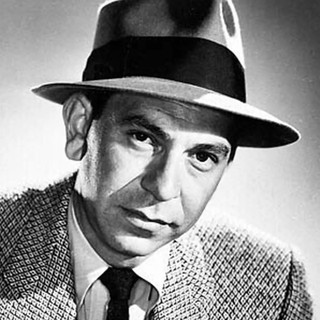At the risk of being repetitive, we return once again to the Los Angeles Times, whose writers and editors seem to leap at any opportunity to present police officers in an unfavorable light. They are so eager to do so, in fact, that they are willing to omit relevant facts from their stories to achieve the purpose.
The latest example came on Oct. 4, when Times writers Joel Rubin and Ben Poston (with help from staff writers Ryan Menezes and Ruben Vives) wrote more than 3,500 words on what they and their editors believe is a serious problem within the Los Angeles County Sheriff’s Department, to wit, too many Latinos being stopped and searched for drugs on a 40-mile stretch of Interstate 5, known in Southern California as the Grapevine.
“The team of Los Angeles County sheriff’s deputies cruises the 5 Freeway,” the story begins, “stopping motorists on the Grapevine in search of cars carrying drugs. They’ve worked the mountain pass in Southern California since 2012 and boast a large haul: more than a ton of methamphetamine, 2 tons of marijuana, 600 pounds of cocaine, millions of dollars in suspected drug money and more than 1,000 arrests.”
Up to this point the reader might be saying: “That’s a lot of arrests and a lot of drugs. Sounds like good police work.”
But this is the Los Angeles Times, remember, where any law enforcement accomplishment must be viewed with the suspicion that the police did something improper to achieve it. And so comes the ominous kicker: “But behind those impressive numbers are some troubling ones.”
The story goes on to break down the racial disparities between drivers stopped by these sheriff’s deputies and those stopped on the same stretch of road by the California Highway Patrol. Sixty-nine percent of the drivers stopped by the deputies were Latino, while only 40 percent of those stopped by the CHP were. The conclusion you are asked to draw can only be that the deputies are “racially profiling” and illegally targeting Latinos.
And to bolster that conclusion, the story of course offers the opinion of “legal scholars” whose opinions conform with those of the writers. Quoted in the story are law professors David Harris of the University of Pittsburgh, Jeffrey Fagan of Columbia, and Alafair Burke of Hofstra University, none of whom, I’m guessing, would object to seeing their views on criminal law matters described as left-of-center. The Times quoted no law professors who might have provided an alternative point of view.
The Times also raised questions about the credibility of some of the deputies, pointing out that some of their cases had been dismissed in federal court. The story cited a ruling by U.S. District Judge Robert Whaley, who earlier this year granted a motion to suppress evidence recovered in the 2017 arrest of Luis Alfonso Corrales Elias. Elias was stopped on the Grapevine and found to be transporting heroin and fentanyl in a secret compartment. The deputy who stopped him, Adam Halloran, testified that upon contacting Elias he smelled a strong odor of air freshener, often a telltale sign of someone trying to mask the scent of drugs.
Judge Whaley ruled that Deputy Halloran had unduly prolonged the duration of the stop and shifted its focus from the traffic violation to an exploration of possible drug activity. Speaking as one who spent more than ten years in drug enforcement, I don’t find the ruling to be completely lacking in merit, but another judge might have ruled differently, as there is no bright line that distinguishes a valid consent search after a traffic stop from a legally suspect one.
The story also cites the case of Mario Manjarrez, who was found to be transporting 48 pounds of methamphetamine. When U.S. District Judge Philip Gutierrez found that Deputy Michael Vann’s observations of Manjarrez’s behavior did not amount to reasonable suspicion to detain him, prosecutors dismissed the case prior to an actual ruling on the admissibility of the evidence.
Again, Judge Gutierrez’s conclusion is not entirely without legal reasoning, but another judge might have reached a different conclusion. The fact that the Times chose to focus on these cases and ignore the hundreds of others in which the deputies’ arrests withstood legal challenge is indicative of the paper’s apparent agenda to portray police officers unfavorably.
But the biggest omission in the reporting, one that might have cast the deputies in a different light, was any mention of who controls the drug trade in Southern California (and elsewhere). The story goes to great lengths to demonstrate that the deputies are unduly focusing on Latinos in their enforcement efforts without acknowledging that it is Latinos, specifically Mexicans, who dominate the trade in cocaine, heroin, fentanyl, methamphetamine, and black-market marijuana. One might think two byline reporters assisted by two others should have unearthed this seemingly relevant information.
I was reminded of an observation made by Jonah Goldberg on National Review Online back in 2001. In a discussion of racial profiling by police, he wrote the following:
Say you have a bunch of vending machines at your office. They all sell the same sweet, sweet, candy. Now, imagine you knew that of the ten vending machines along the wall, machine #5 would give you a free Almond Joy 10% percent of the time, wouldn’t you use that machine closer to 100% of the time? Or, as Daniel Seligman has argued: If you know that one slot machine at Bally’s pays jackpots 10% more often than any other, the line for that slot machine would be a lot longer than any other because even a 10% edge is a significant advantage.
This is not to justify stopping people based solely on their race or ethnicity, nor is it to say that other ethnic groups are not involved in drug dealing, but if you follow the supply chain from any street corner drug dealer of any race all the way to the original producer, it won’t be long before you encounter a Mexican. This is the reality of the drug trade that the Times chooses to overlook, and in doing so they present an incomplete, even dishonest account. Their readers deserve better.










Join the conversation as a VIP Member